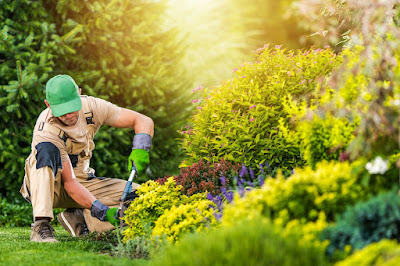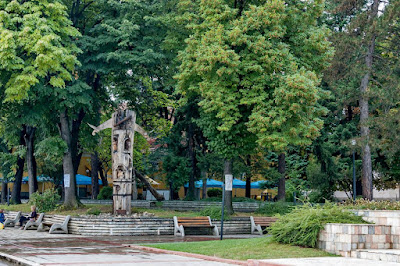Common Tree Issues in Rochester, NY: What Homeowners Should Know
Trees add beauty and value to Rochester homes. They provide shade in summer heat and block cold winter winds. Yet trees in this region face unique challenges. Homeowners who spot problems early can save their trees from serious damage.
Rochester's Climate and Trees
Rochester sits in USDA hardiness zone 6a. This means winter temperatures can drop to -10°F. The city gets about 34 inches of rain yearly, plus 99 inches of snow. These conditions stress trees in specific ways.
The shift between hot summers and cold winters puts pressure on trees. This cycle can crack bark and damage roots. Salt used on roads during winter seeps into soil and hurts tree health over time.
Rochester's rich history as both Flour City and Flower City shaped its tree landscape. Many older neighborhoods feature trees planted during the city's growth periods.
Common Rochester Tree Diseases
Oak Wilt
Oak wilt kills trees fast. Red oaks may die within weeks of infection. The disease spreads through root systems and by beetles that carry spores.
Signs of oak wilt include:
Leaves turning brown from edges inward
Rapid leaf drop during summer
Dark streaks in wood under bark
If oak wilt appears, remove infected trees quickly. This helps stop spread to nearby oaks. The New York State DEC offers guidance on proper removal methods.
Dutch Elm Disease
This disease destroyed many elm trees across Rochester. It remains a threat to surviving elms. The fungus blocks water movement inside trees, causing branches to wilt and die.
Symptoms include:
Yellow or brown leaves that curl
Branch death that starts at tree top
Dark streaks in sapwood
Treatment works best in early stages. Tree experts can inject fungicides to fight the disease. Regular checks help catch problems before they spread.
Apple Scab
Apple scab affects crabapples and fruiting apples. While rarely fatal, it makes trees look sick and reduces fruit quality.
Look for:
Olive-green spots on leaves
Twisted or puckered leaves
Early leaf drop
Resistant varieties offer the best defense against apple scab. For existing trees, rake fallen leaves to remove fungus sources.
Common Rochester Tree Pests
Emerald Ash Borer
This green beetle has killed millions of ash trees across the Northeast. Since its discovery in New York in 2009, it has moved across the state.
Signs of infestation include:
D-shaped exit holes in bark
S-shaped tunnels under bark
Thinning leaves in tree crown
Woodpecker damage
Treatment options exist but cost money and need repeat applications. Many homeowners choose to remove ash trees and plant different species. Learn more about this pest from the USDA.
Gypsy Moth
Gypsy moths attack many tree species but prefer oaks. Severe infestations can strip trees of leaves. While trees usually survive, repeated attacks weaken them.
Watch for:
Hairy caterpillars with blue and red dots
Egg masses that look like tan felt on trunks
Complete leaf loss in early summer
Control methods include sticky bands around trunks and biological sprays. Natural predators often keep populations in check.
Asian Longhorned Beetle
This large beetle threatens maple trees. It bores into trunks and branches, eventually killing trees.
Identification points:
Round exit holes the size of pencil erasers
Shallow pits where eggs are laid
Sawdust at tree base
Oozing sap from trunk wounds
No effective treatment exists once trees are infested. Early detection and removal stops spread. Report suspected cases to the NYS Department of Agriculture.
Weather-Related Tree Issues
Winter Storm Damage
Heavy snow and ice break branches. This happens most with trees that haven't been pruned properly. Bradford pears, silver maples, and willows face high risk.
Prevent damage by:
Removing dead or weak branches before winter
Proper pruning to create strong branch structure
Avoiding topped trees which grow weak branches
After storms, trim broken branches cleanly. This helps trees heal faster and prevents decay.
Drought Stress
Though Rochester gets fair rainfall, dry periods happen. Trees show drought stress through wilted leaves and early color change.
Signs include:
Curled or yellow leaves
Early leaf drop
Cracks in soil around tree base
Young trees need regular watering during dry spells. Mulch helps keep soil moist but should not touch the trunk. Two to three inches of mulch works best.
Salt Damage
Road salt hurts trees near streets and sidewalks. Salt spray hits branches while salty runoff soaks roots.
Look for:
Brown needle tips on evergreens
Stunted leaf growth
Twig dieback on street side of tree
Salt-tolerant species like ginkgo and honeylocust handle street conditions better. For existing trees, watering deeply in spring helps flush salts from soil.
Structural Problems in Trees
Co-dominant Stems
Trees with two or more main trunks often split apart. The weak connection between stems can't support full tree weight.
Warning signs:
V-shaped connection between trunks
Cracks where stems meet
Tight bark squeezed between stems
Young trees can be pruned to create one main leader. Older trees may need cables or braces for support.
Root Issues
Construction, soil compaction, and poor planting practices damage tree roots. Since roots stay hidden, problems often go unnoticed until trees show stress.
Watch for:
Thinning leaf canopy
Fungal growth at tree base
Leaning trunk
Exposed roots with damage
Protect roots by keeping heavy equipment away from trees during yard projects. Avoid adding or removing more than two inches of soil around existing trees.
When to Call a Professional
Some tree issues need expert help. Certified arborists have training to diagnose and treat tree problems safely. Consider calling a professional when:
Trees lean suddenly after storms
Large dead branches hang over buildings
Mushrooms grow from trunk or major roots
Trees show rapid decline without clear cause
Moreover, you can get expert tree care services from reliable companies.
Keeping Rochester's Trees Healthy
Trees benefit from regular care. Simple steps make a big difference:
Water deeply during dry periods rather than frequent light watering
Mulch properly without "volcano" piles against trunks
Prune dead or crossed branches in dormant season
Choose native tree species for new plantings
Remember that mature trees add property value. A large healthy tree can increase home value by 10-15%. This makes tree care a smart investment.
Read more and take smart tree care options that will benefit you for many years to come.


